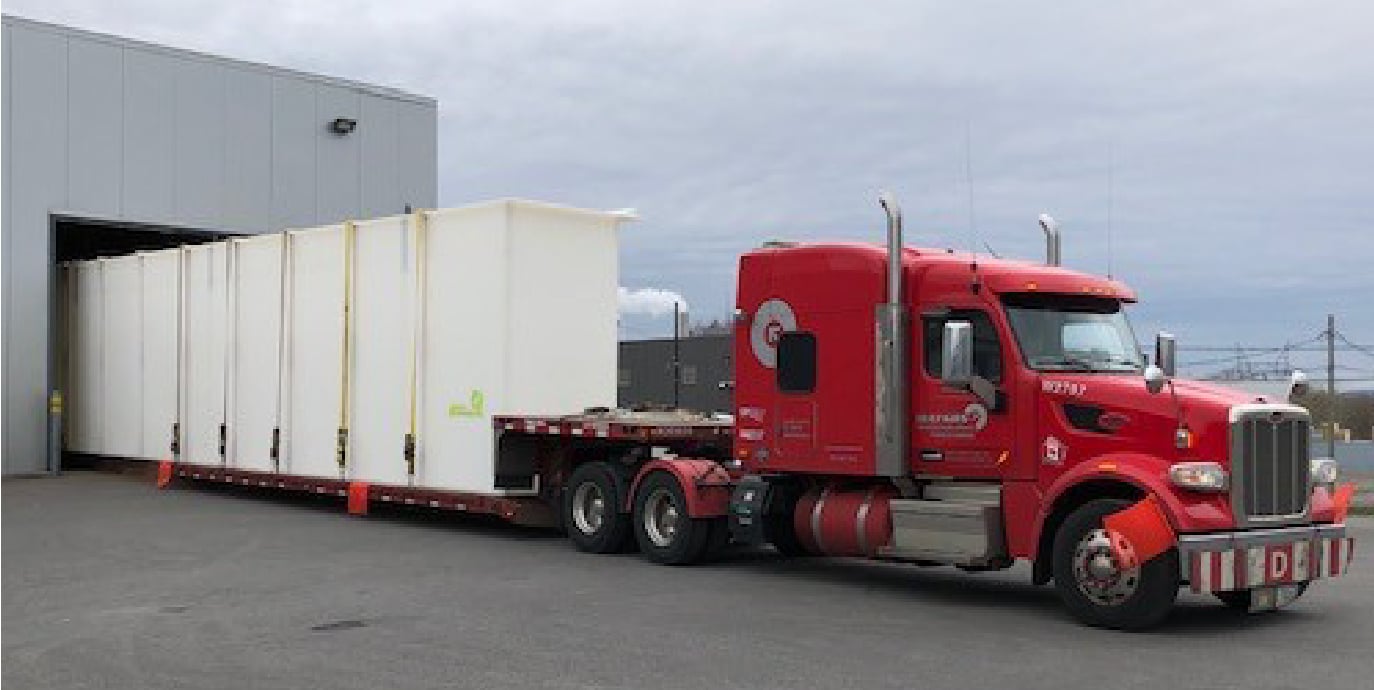What is polypropylene?
This article focuses on polypropylene, a polymer belonging to the thermoplastic family. We will discuss its main advantages and applications as well as the industries in which it is used. Polypropylene, sometimes called polypropene or PP, is a versatile thermoplastic used in a wide range of industries. Its mechanical properties are quite similar to plastics of the polyethylene family, such as HDPE. Although polypropylene is much stiffer and tougher than HDPE, both materials are often used in similar applications.
Homopolymer Polypropylene
Homopolymer polypropylene is made from a single type of monomer (polypropylene monomer). This material is the most widely used for general purposes. Some of its mechanical properties are different from those of copolymers: it is more durable, stronger and much stiffer. It is therefore important to evaluate which type is most suitable for the application.
Polypropylene copolymer
Unlike a homopolymer, a copolymer combines at least two different monomers. In the case of polypropylene, the copolymer version is less rigid and more flexible. This greater flexibility allows the copolymer polypropylene to be more resistant to impacts and more durable, so it is less likely to crack. Copolymer polypropylene is better suited for tanks since it can undergo some deformation under mechanical stress.
 The main advantages of polypropylene
The main advantages of polypropylene
1. Resistant to chemicals
.png?width=100&name=flask%20(3).png) Since polypropylene is chemically inert, it does not react when in direct contact with chemical agents. Its excellent chemical compatibility makes it an ideal choice when designing corrosive storage units such as tanks.
Since polypropylene is chemically inert, it does not react when in direct contact with chemical agents. Its excellent chemical compatibility makes it an ideal choice when designing corrosive storage units such as tanks.
2. Food safe
.png?width=100&name=restaurant%20(1).png) Polypropylene meets FDA and 3-A Dairy food standards. It can therefore be used in applications where it comes into direct contact with foodstuffs, including water tanks or other types of liquids intended for human consumption.
Polypropylene meets FDA and 3-A Dairy food standards. It can therefore be used in applications where it comes into direct contact with foodstuffs, including water tanks or other types of liquids intended for human consumption.
3. Durable and lightweight
.png?width=100&name=shield%20(6).png) Although very light and low density (about 900 kg/m3), it is exceptionally rigid, more so than most plastics in the polyethylene family. Polypropylene is able to resist impacts and shocks and has excellent bending strength. It is therefore used extensively in the advertising industry, mainly in its corrugated form (PPA), which is rigid yet ultra-light.
Although very light and low density (about 900 kg/m3), it is exceptionally rigid, more so than most plastics in the polyethylene family. Polypropylene is able to resist impacts and shocks and has excellent bending strength. It is therefore used extensively in the advertising industry, mainly in its corrugated form (PPA), which is rigid yet ultra-light.
4. Weldable
-png-1.png?width=100&name=welding-mask%20(1)-png-1.png) Its weldability allows the design of larger parts. The plastic welds provide a tight and strong seal. The flexibility of this type of welding also reduces the risk of cracking. Homopolymer polypropylene is usually preferred when designing tanks because it is less expensive than the copolymer version.
Its weldability allows the design of larger parts. The plastic welds provide a tight and strong seal. The flexibility of this type of welding also reduces the risk of cracking. Homopolymer polypropylene is usually preferred when designing tanks because it is less expensive than the copolymer version.
5. Does not absorb moisture
 Polypropylene does not absorb moisture, making it an excellent choice to manufacture tanks and containers used to store liquids and chemicals.
Polypropylene does not absorb moisture, making it an excellent choice to manufacture tanks and containers used to store liquids and chemicals.
Polypropylene applications
Food
.png?width=100&name=restaurant%20(1).png) Polypropylene is FDA and 3-A Dairy compliant, so it can be used in direct contact with foodstuffs. In addition to tank design, it is also used in the manufacture of structures and parts for the food industry.
Polypropylene is FDA and 3-A Dairy compliant, so it can be used in direct contact with foodstuffs. In addition to tank design, it is also used in the manufacture of structures and parts for the food industry.
Medical and Pharmaceutical
 Thanks to its food grade and excellent chemical resistance, polypropylene is an ideal choice for laboratory equipment and accessories. It is also available in more specialized grades, such as flame-retardant polypropylene, a material also used in the medical field and in laboratories.
Thanks to its food grade and excellent chemical resistance, polypropylene is an ideal choice for laboratory equipment and accessories. It is also available in more specialized grades, such as flame-retardant polypropylene, a material also used in the medical field and in laboratories.
Chemical
.png?width=100&name=flask%20(3).png) Like HDPE, polypropylene has good chemical compatibility. It can be used to store a wide variety of chemicals while maintaining its inherent properties. To learn more, see our article, The Advantages and Applications of HDPE.
Like HDPE, polypropylene has good chemical compatibility. It can be used to store a wide variety of chemicals while maintaining its inherent properties. To learn more, see our article, The Advantages and Applications of HDPE.
Les limitations du polypropylène
Low temperatures
-png.png?width=100&name=snowflake%20(3)-png.png) Polypropylene is not well suited for low temperature environments, which adversely affect some of its properties, such as its impact resistance. In this case, high-density polyethylene, which has a high molar mass, is more suitable and will continue to perform well even in the coldest environments. For example, TIVAR® 88 can tolerate temperatures as low as -200 °C (-328 °F).
Polypropylene is not well suited for low temperature environments, which adversely affect some of its properties, such as its impact resistance. In this case, high-density polyethylene, which has a high molar mass, is more suitable and will continue to perform well even in the coldest environments. For example, TIVAR® 88 can tolerate temperatures as low as -200 °C (-328 °F).
UV resistance
-png.png?width=100&name=sun%20(1)-png.png) Exposure to UV rays is a constraint that must be taken into consideration, especially when the plastic is used outdoors. Polypropylene will lose its mechanical properties when exposed to UV rays for prolonged periods of time.In this case, certain types of high-density polyethylene are preferable since they are highly resistant to UV rays. This is why HDPE is often used when designing playground equipment.
Exposure to UV rays is a constraint that must be taken into consideration, especially when the plastic is used outdoors. Polypropylene will lose its mechanical properties when exposed to UV rays for prolonged periods of time.In this case, certain types of high-density polyethylene are preferable since they are highly resistant to UV rays. This is why HDPE is often used when designing playground equipment.







